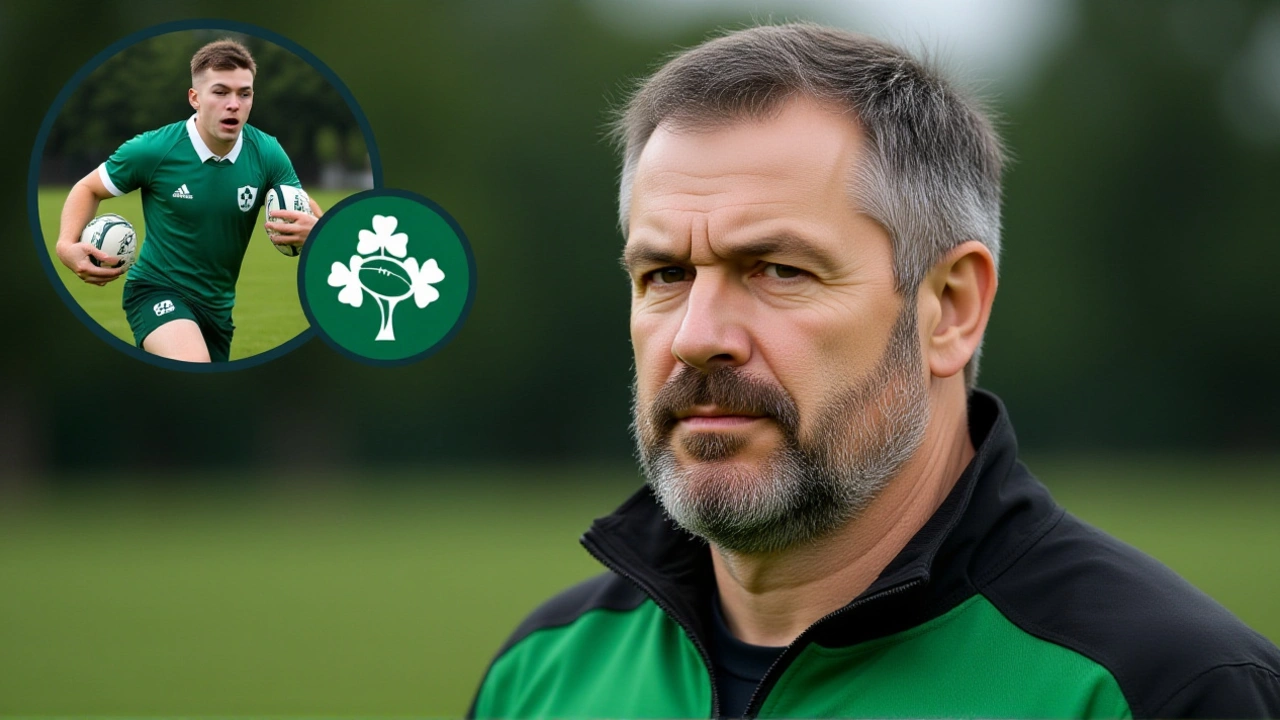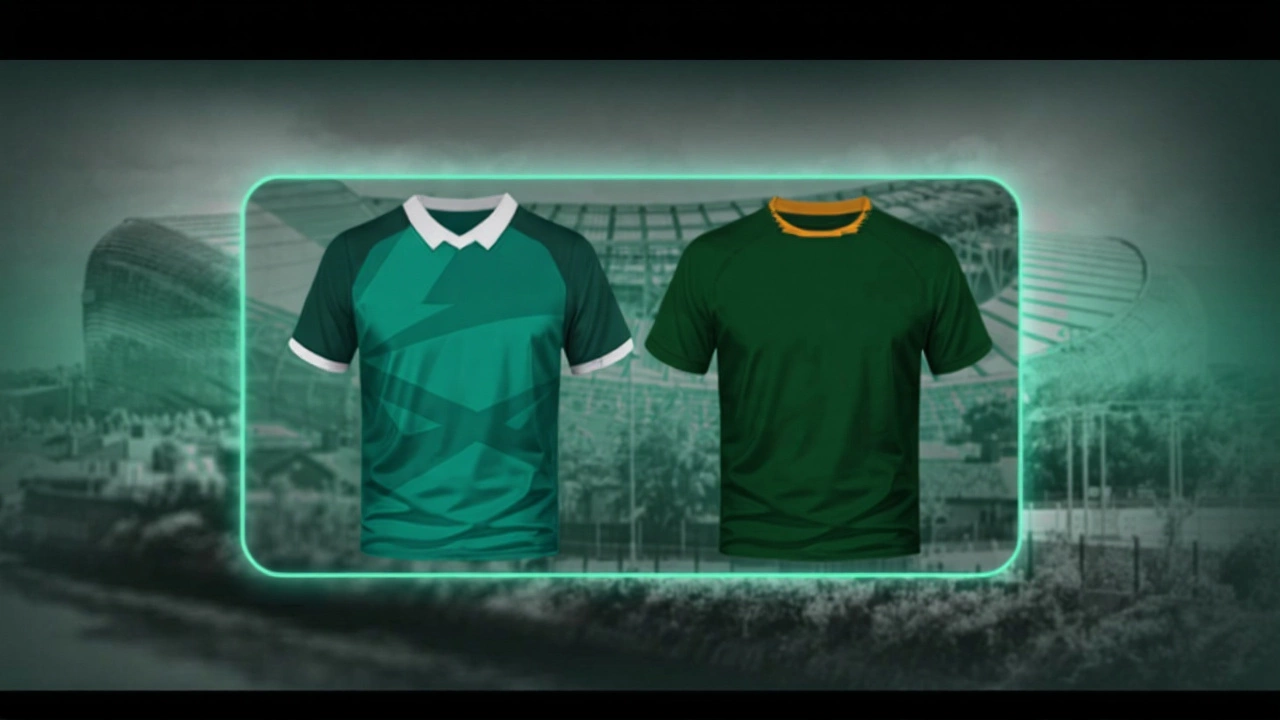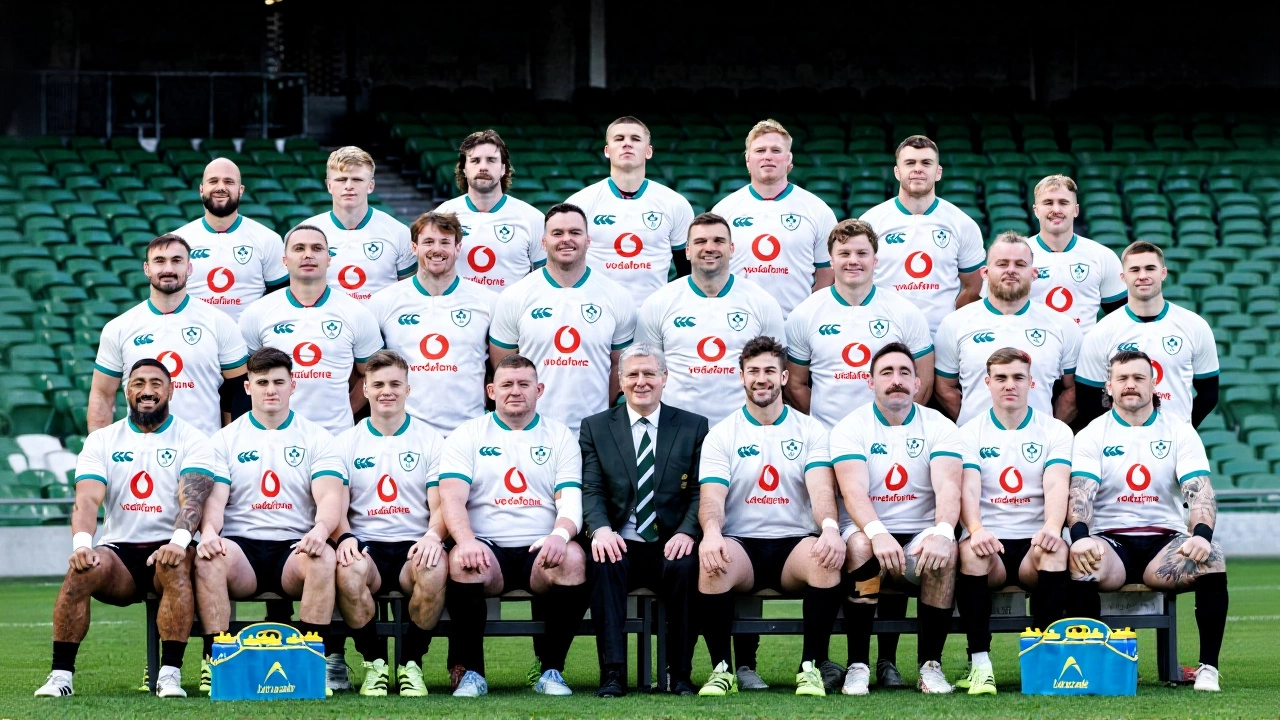Farrell's Fly-Half Gamble Backfires as Springboks Crush Ireland 24-13 in Dublin
 Nov, 23 2025
Nov, 23 2025
When Andy Farrell named 23-year-old Sam Prendergast as his starting fly-half for Ireland’s final home Test of 2025, he was betting big on youth, vision, and untested nerve. The gamble didn’t just fail—it unraveled in front of 51,700 roaring fans at the Aviva Stadium in Dublin on Saturday, November 22, 2025, when the Springboks walked out with a 24-13 win, their first in the Irish capital in 13 years. It wasn’t just the scoreline that stunned. It was the chaos. The red cards. The sin-bins. The center playing in the back row. The fly-half forced into the back three. And a coach left shaking his head, saying, "I haven’t seen a game like that ever, and you think you’ve seen it all."">
The Selection That Started It All
Farrell, 49, made his boldest move by handing the No. 10 jersey to Prendergast, a Leinster playmaker with just 11 caps and zero starts at fly-half in Test rugby. The decision was a statement: Ireland wanted to play fast, wide, and fearless against the world’s most physical side. He paired him with veteran Jamison Gibson-Park, the 31-year-old New Zealand-born scrum-half whose calm under pressure had anchored Ireland’s attack for years. The rest of the XV was a who’s who of Irish rugby royalty: Caelan Doris as captain, Tadhg Furlong and Andrew Porter in the front row, James Ryan and Tadhg Beirne in the engine room. The bench? Loaded with depth. But none of that mattered once the whistle blew.Chaos in the First Half
The Springboks, ranked No. 1 in the world, came out like a freight train. By the 25th minute, they led 12-0, with tries from Damien Willemse and Cobus Reinach, plus a penalty try awarded after Ireland’s scrum collapsed under relentless pressure. Then came the unraveling. Ryan, Ireland’s 28-year-old lock and defensive lynchpin, received a yellow card for a high tackle. Moments later, the TMO upgraded it to red—20 minutes off, not 10. The crowd fell silent. Ireland was down to 14. Then, in the final six minutes of the half, three more Irish players were sin-binned: Prendergast for a reckless clearance, Andrew Porter for collapsing a maul, and replacement Jack Crowley for a late hit. With Ryan gone and three others off, Ireland briefly played with just 12 men. The Springboks smelled blood. They added another penalty, making it 19-7 at halftime. It was the most bizarre, punishing half of rugby most spectators had ever witnessed.When the Rules Break Down
What happened next was pure rugby theatre. With Prendergast off and Crowley in the sin-bin, Farrell had no fit fly-half left. So he moved Crowley—normally a kicker and playmaker—to full-back. Center Bundee Aki, 34, was shuffled into the back row. The team had no specialist kicker on the field. They didn’t care. They fought. With 12 men down, Ireland’s defense held firm. The Springboks had 14 minutes of sustained pressure in the second half. They didn’t score. Not once. Ireland clawed back with a try from Mack Hansen and two penalties from Jack Crowley after he returned. The final 40 minutes ended 6-5 to Ireland. It was heroic. It was meaningless. The damage was done.
Farrell’s Defense
In the post-match press conference at 21:55 UTC, Farrell was asked if the first half was “borderline shambolic.” He didn’t flinch. “I won’t repeat your word,” he said. “But I’ll tell you this: we’re trying to get order out of chaos. We’ve got guys covering two, three positions. That’s not normal. That’s not rugby as we know it.” He praised his team’s resilience. He called the disciplinary chaos “unprecedented.” He admitted Prendergast’s selection was a risk—but not a mistake. “Our high-ball stuff was way better last week,” he said. “Our conversion in the 22? Way better. This wasn’t about talent. It was about control. And we lost it.” The Springboks, meanwhile, celebrated their first Dublin win since 2012. Their coach, Rassie Erasmus, called it “a test of character.” For Ireland, it was a test of sanity.What This Means for 2026
Ireland’s World Cup campaign begins in less than a year. This match exposed two brutal truths: their discipline is fragile under pressure, and their depth at fly-half is dangerously thin. Prendergast will still be considered for the Six Nations, but the pressure is now on. Who else can step up? Jack Crowley showed he can handle emergency duty, but can he start? And what about Cian Prendergast, Sam’s younger brother, who sat on the bench? Is he the future? The Aviva Stadium, once a fortress, now feels vulnerable. The Springboks know it. So do the All Blacks. And the French. Ireland’s 2025 campaign ended in humiliation. But the real battle? That’s just beginning.
Behind the Cards: A Discipline Crisis
Four yellow cards and one red in a single match is rare. In Test rugby, it’s catastrophic. Ireland averaged 1.2 yellow cards per match in 2024. This game: five. The problem isn’t just aggression—it’s miscommunication. Ryan’s red came from a tackle that was technically legal, but the TMO deemed it reckless. Prendergast’s sin-bin? A panicked clearance. Porter’s? A scrum collapse under pressure. These weren’t dirty plays. They were mistakes born of overload. Farrell’s system asked too much, too fast.What’s Next?
Ireland’s next Test is in January against Italy in the Six Nations. Farrell will likely start Crowley at fly-half, with Prendergast on the bench. But the bigger question: who will coach the defense? Who will teach discipline under pressure? And can Ireland rebuild their identity before the World Cup?Frequently Asked Questions
Why was James Ryan’s yellow card upgraded to a red?
Ryan’s initial yellow card was for a high tackle on a Springbok ball carrier. After review, the TMO determined the contact was above the shoulders and carried significant force, meeting World Rugby’s new criteria for a red card under the ‘dangerous play’ protocol. The upgrade to a 20-minute sin-bin was unusual but permitted under the 2025 disciplinary guidelines for high tackles with high risk of injury.
How often has Ireland played with 12 men in a Test match?
This was only the third time in Ireland’s 140-year Test history they’ve played with 12 men. The last was in 2009 against New Zealand in Dublin, also due to multiple sin-bins and a red card. It’s rarer than a Grand Slam. The fact it happened again, in the same stadium, speaks to a systemic breakdown in discipline under pressure.
What impact does this loss have on Ireland’s World Cup chances?
Ireland remain favorites for Pool B, but this defeat exposed critical flaws: inconsistent discipline, lack of fly-half depth, and poor decision-making under pressure. If they can’t fix these by June 2026, they risk being eliminated in the quarterfinals by a team that doesn’t make the same mistakes. The Springboks showed how to punish them. Other teams will learn.
Is Sam Prendergast still the future at fly-half?
Farrell hasn’t ruled him out. But with Prendergast sin-binned and struggling to control the game, the pressure is mounting. Jack Crowley’s composure in emergency duty suggests he may be better suited to start. The next Six Nations will be Prendergast’s chance to prove he can handle the spotlight—not just in attack, but in managing chaos.
Why didn’t Ireland have a specialist kicker on the field?
With Prendergast, Crowley, and captain Doris all off the field at different times, Farrell had to use whoever was available. Crowley, normally a kicker, was moved to full-back. The only specialist kicker left was Tom Farrell, the 31-year-old Leinster utility back, who was never brought on. It was a tactical blind spot—and one that cost Ireland a crucial penalty in the 65th minute.
What’s the significance of the Springboks winning in Dublin after 13 years?
South Africa hadn’t won in Dublin since 2012, when they edged Ireland 20-18. That victory marked the start of their 2019 World Cup rise. This 2025 win signals a return to dominance. It’s psychological as much as tactical: the Springboks now know they can break Ireland at their strongest fortress. For Irish fans, it’s a wake-up call. For the world, it’s a warning.